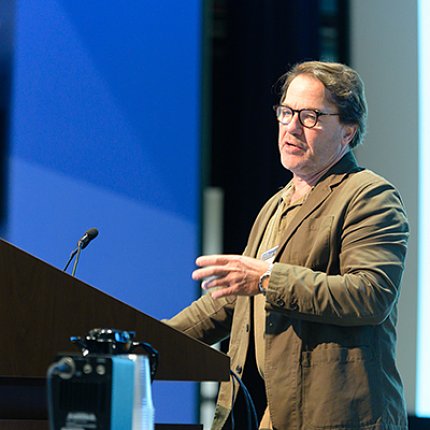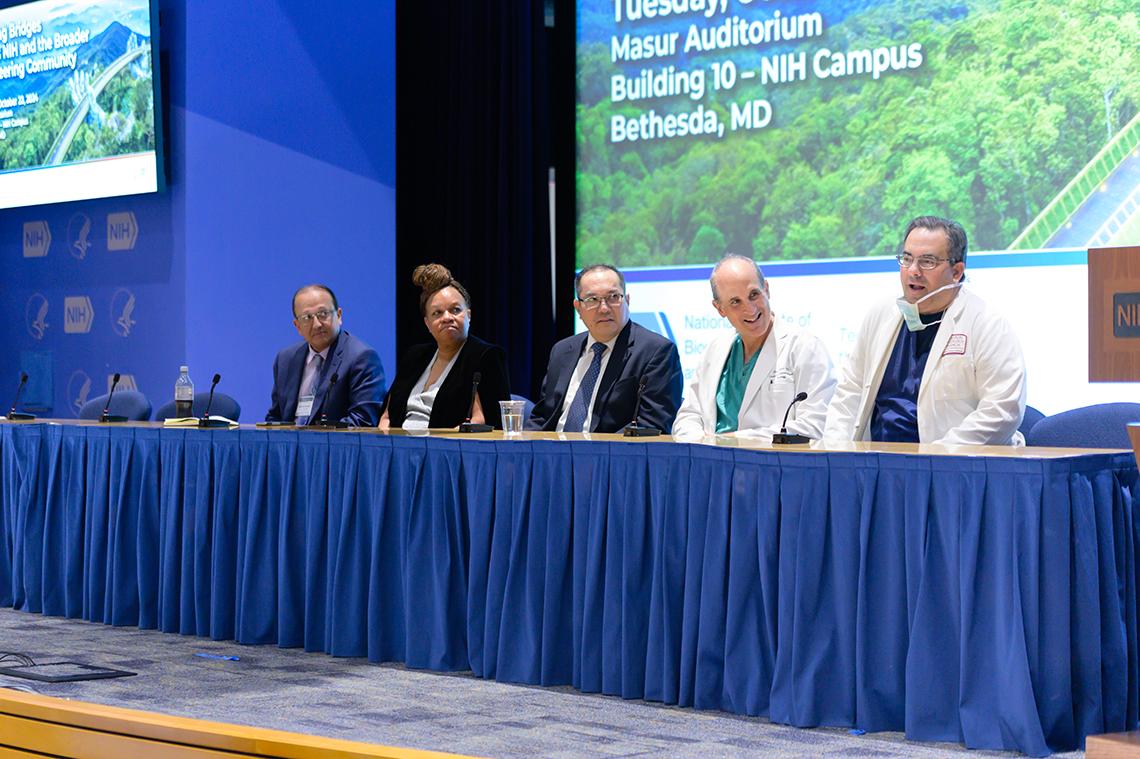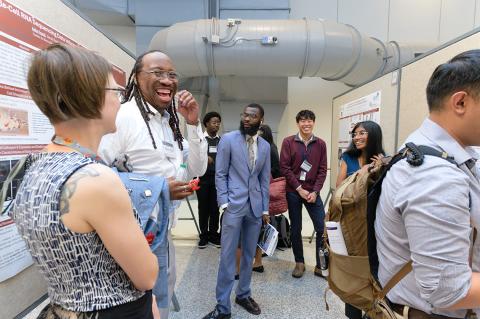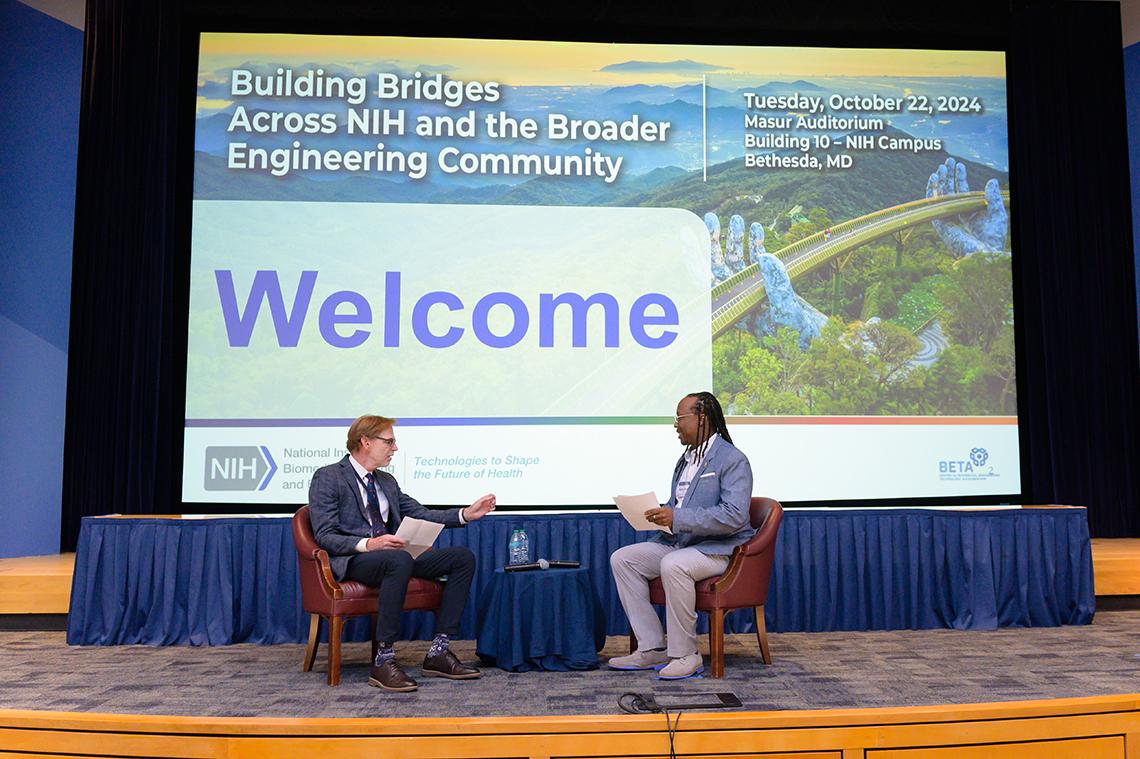Breaking Barriers and Building Bridges in Medicine

Photo: Marleen Van Den Neste
Biomedical engineers and imagers play a critical role in turning medical science into usable medical technology, but they cannot do it alone. Collaboration with other fields is key.
To foster connections between those developing technologies and potential users in the clinic, the National Institute of Biomedical Imaging and Bioengineering (NIBIB)’s Center for Biomedical Engineering Technology Acceleration (BETA Center) organized a day-long meeting on the NIH campus. The event convened hundreds of engineers, clinicians and scientists from across the world.
NIH Director Dr. Monica Bertagnolli—who is no stranger to engineering, having majored in chemical engineering as an undergraduate at Princeton University—delivered opening remarks that underscored the importance of biomedical engineering as a discipline and called for further utilization of NIH’s engineering expertise and resources.
“We can accomplish so much more if our national research community interacts with the intramural investigators based at NIH,” said Bertagnolli. “We need to bring your command of physics, biology, chemistry and all your different forms of expertise and associated technologies to benefit people where they are.”

Photo: Marleen Van Den Neste
The event featured speakers from NIH and other federal agencies, industry, military and academia, who presented on a wide range of topics including engineered tissue models, in situ organ imaging, adaptive exoskeletons and portable diagnostics.
The scientific talks kicked off with plenary speaker Dr. John Tisdale, a clinical researcher at the National Heart, Lung, and Blood Institute (NHLBI). He spoke about his career in sickle cell disease research which, over decades of collaboration and dedication, led to the FDA approval of gene therapies for the disease in 2023.
Throughout the day, a mix of established and early-career researchers introduced colleagues from different fields, institutions and countries to their work.

Photo: Marleen Van Den Neste
During a panel on innovation, experts from various sectors weighed in on what makes for partnerships that can successfully translate medical technologies from an idea to something that benefits patients’ lives. An essential element they discussed was consideration for and input from not only the end users in the clinic, but also the others who will have to interact with a design, such as manufacturers.
Attendees also had the opportunity to take tours of NIH facilities, including the Instrumentation Development and Engineering Application Solutions (IDEAS) resource, the Vaccine Research Center, and the National Center for Advancing Translational Sciences (NCATS).
Dr. Rashid Bashir, a professor and dean of engineering at the University of Illinois-Urbana Champaign, delivered the final plenary talk, which centered on his lab’s development of technologies in several arenas. Bashir’s presentation touched on advanced techniques to detect pathogens in dried blood, new biomarkers for sepsis and biohybrid soft robots.

Photo: Marleen Van Den Neste
Discussing the many skills and technologies that engineers offer the medical field, Bashir urged for greater unity between the two communities.
“Medicine is one domain where we don’t have as easy access. And I think if there was a way to create that, it would just be good for everyone,” Bashir said. “There are tremendous opportunities to build many bridges.”
For many attendees, this event was their first visit to NIH’s campus. And for many, it introduced them to the multitude of channels by which NIH supports medical technology development, including the Intramural Research Program.
“This meeting created the collaborative atmosphere we wanted, but this is just the beginning,” said Dr. Manu Platt, NIBIB investigator and director of the BETA Center. “Our goal is for the BETA Center to be a central hub to facilitate meaningful, long-term collaborations between investigators across boundaries within and beyond NIH.”
To learn more about and connect with the BETA Center, visit https://go.nih.gov/RMPD2eJ.
